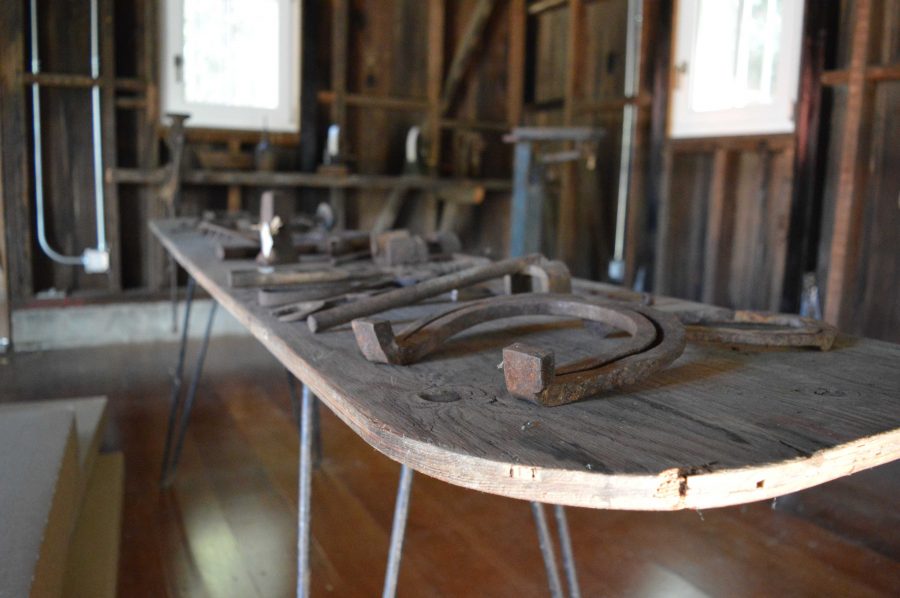The McClellan Ranch blacksmith shop might appear to be just another new addition to the Preserve, but any long-time patron of the park will tell you otherwise. Not only has it remained in the space as an abandoned 19th-century-style shack for the better part of the last 30 years, but according to Barbara Banfield, the shop tells an interesting tale of Cupertino’s history.
Originally, the shop was much bigger, built in the 1880s and located on the crossroads of Stevens Creek and De Anza Boulevard. Established by Philadelphia blacksmith William Baer, it became the focal point for metalworking projects in the area, particularly wagon repair.
“When the first Model Ts came, they were kind of motorized wagons in a way,” Banfield said. “They had the same kind of springs old wagons had, and so a blacksmith became the natural spot where they might bring things like that to repair.”
Over time, the shop grew into a garage where the Baer family could fix cars and other machines, but after its founder died, the site gave way to a more modern gas station.
“His son, Charlie Baer, wanted to save a lot of the tools,” said Benfield. “He was interested in preserving the old stuff, but he needed the space for more modern uses. So he built a replica smaller-scale shop on his property.”
After Charlie died, there was little that could be done to preserve the replica, but the City of Cupertino did manage to purchase the antique tools which now adorn the interior of the McClellan Blacksmith shop at an auction.
When it came to the modern renovations, the city was slower to act, as Banfield said. Thirty years ago when Banfield first started working at the ranch, local blacksmithing organizations used to meet at the shop and share techniques.
“But then, when [the shop] needed a roof, that was probably 23 or 24 years ago, the building department said, ‘You know, this isn’t up to modern earthquake code.’ So they [thought], ‘Let’s wait on the roof.’” The city went on to continuously drape the ceiling with makeshift tarps in hope of an incoming grant that could repair the structure permanently. “What they decided to do is put plywood on the outside of the existing walls and put siding with the same dimensions as the original… now, we’re hoping to get approval to fire up the forge.”
Banfield added that public demonstrations will most likely be held soon, once the shop is fully up and running, and as the side paneling becomes weathered, hopefully the shop will look as it did all those years ago when it operated under the Baer family, as part of Cupertino’s history.



















